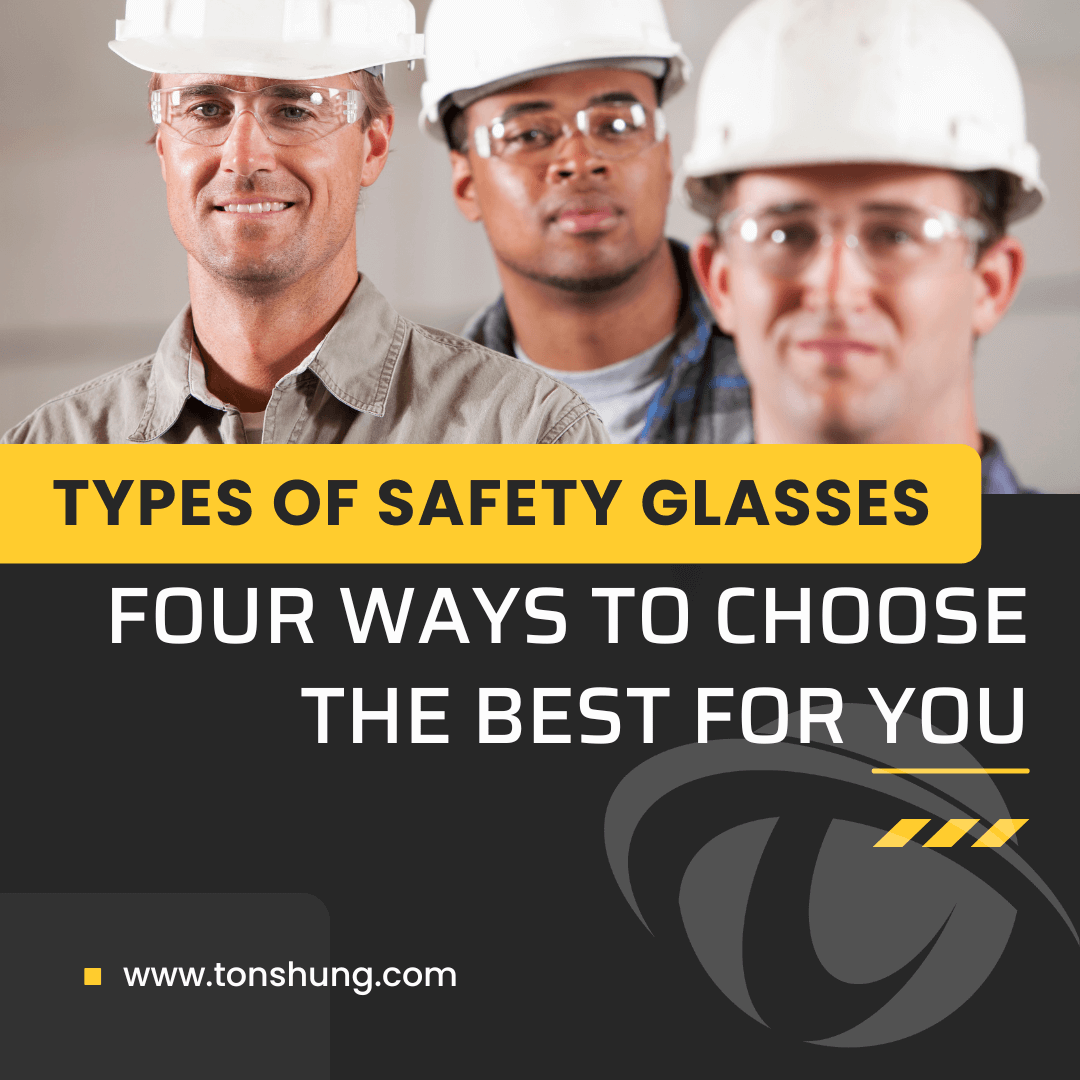There are types of safety glasses and we all know wearing safety glasses is the correct way to lower the work-related eye injury risk. However, how to choose suitable safety glasses for your own? There have four ways to select the best safety glasses for your need: hazard condition, lens options, design functions, and safety standards.
First, evaluate your potential workplace hazards
First, evaluate your potential work hazards, such as impact risk, chemical splash and mist, dust, and optical radiation.
- Impact-risked exists in the following works: chipping, grinding, machining, masonry work, riveting, and sanding. Wear the safety glasses with side protection, or direct – indirect ventilation goggles will be helpful. Faceshield can be worn over spectacles or goggles is also a good choice.
- Chemical-risked exists in your work as the following occur frequently: liquids, acid and chemical handling, and plating.
- Face to the splash, droplets, and sprays working condition, choose the indirect ventilation goggles or wear a face shield over the goggles.
- If the air is full of irritating mist, non-ventilation goggles are required, or wear a face shield over the goggles.
- Dust-risked exists in the following working process: woodworking or buffing.
Direct or indirect ventilation goggles are always a good option for general dusty conditions. If you work in the fine dust, indirect or no ventilation goggles will be recommended. - Optical radiation risk such as Infrared Radiation (IR), Visible Light (Glare), or Ultraviolet Radiation (UV). It’s recommended to wear spectacles with side protection, direct-indirect ventilation goggles, face shield or welding helmet worn over spectacles or goggles.
Second, consider lens coating and lens tinted.
Second, lens options such as lens coating and lens tinted.
- Lens coating: to keep the vision visible and clear, the most common lens coating are Anti-scratch (Hard coating) and Anti-fog coating.
- Lens tinted chosen should consider the light condition in your working environment.
- A clear lens is a common option for indoor usage, and a gray lens is for outdoor and under sunlight protection.
- If you are working in a frequent light changes condition, a photochromic lens or a changeable lens safety glasses will be a good option.
Learn More: How to prevent goggles from fogging?
Third, think of personal favor.
Third, personal favor.
- Fit over the glasses (OTG). Safety glasses which can be over the glasses are one of the convenient ways for people who wear prescription glasses. The function can be applied to safety glasses and goggles.
- Glasses temples adjustable. The temple’s length and angle adjustable functions offer more flexibility for the user.
- Other functional options such as anti-slip temples, co-injection frame or temples, and adjustable nose pad can be chosen based on personal preference.
Fourth, must have ANSI Z87 or EN166 certification.
Fourth, don’t forget to select the safety eyewear that complies with ANSI Z87 or EN166 certification which means that these protectors meet a minimum safety requirement. You can see these signs and markings on the eyewear’s frame, temples, and package.
Learn More: What does Z87 mean on safety glasses?
Learn More: What Does EN166 Mean? European Standard for Safety Glasses?

